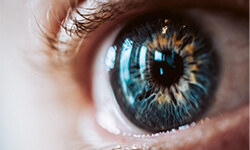
Observer bias stands as a notable form of research bias, characterized by a systematic deviation from true observations and data recording in a study. This divergence often stems from a researcher’s conscious or unconscious prejudices. When this type of research bias manifests, it can lead a scientific investigator to portray findings that stray from genuine accuracy and verity.
Definition: Observer bias
Observer bias is when observers tend to see not what is there but what they want or expect. As a result, it leads to a systematic difference between the actual value and the observed one.
Observer bias has been documented repeatedly in blood pressure studies. When clinicians take blood pressure readings using a mercury sphygmomanometer, they have been found to round the reading up or down to a number of their choosing, which causes discrepancies in BP readings.
Types of observer bias
The types of observer bias include:
- The observer-expectancy effect is usually used in a research context to describe how the observer’s perceived expectations subconsciously influence the study participants’ behavior.
- This effect may include influences on participants’ behavior, including the creation of demand characteristics that affect the participants or selective recording of the research data.
- The observer-expectancy effect is also known as expectancy bias or the Pygmalion effect.
- The actor-observer bias is a bias when one tends to attribute the causes of actions differently depending on whether they are an observer or an actor.
- As the actor, one’s behavior is attributed to external factors, while as an observer, the behavior of others is attributed to internal factors.
- It is an attributional bias that influences how we interact with and perceive others.
- This bias is mainly caused by the difficulty actors have in seeing their situation objectively, while as an observer, they can view a situation with perspective.
- It is also known as actor-observer asymmetry.
- The Hawthorne effect describes how a study’s participants alter their behavior when they know they are being observed.
- This effect was discovered through research conducted at the Hawthorne Western Electric Plant (which is how it came to be named).
- The original research was initially designed to observe the effects of floor lighting on workers’ productivity. However, their productivity increased when the lighting was diminished and improved and when the researchers also changed other variables.
- They discovered that the increase in productivity was not because of a change in lighting but the increased attention from their supervisors.
Experimenter bias
Experimenter bias is a broad term used to cover the different types of biases that influence researchers in their studies. These biases include the actor-observer bias and the observer expectancy effect, among others.
Observer bias: Examples
Example 1: The case of the clever horse
One of the first recorded instances of observer bias was in the case of the horse, ‘Clever Hans.’ His owner, Wilhem, claimed that the horse could perform arithmetic equations. Wilhem would ask the horse questions, and Clever Hans would appear to answer by tapping its hoof with the correct answer.
A German psychologist and biologist, Oscar Pfungst, studied this phenomenon and found that when Hans neared the correct answer, Wilhem would subconsciously react in a certain way that would signal the horse to stop tapping. The expectations of the horse’s owner influenced the behavior of Clever Hans and produced erroneous data.
Example 2: The case of the dull rats
In 1963, Kermit Fode and Robert Rosenthal conducted a study with senior psychology students who were each given rats to test. The researchers told the students that some rats were ‘bright’ and were bred to be good at solving mazes.
They also told them that the other rats were ‘dull’ and had been bred from rats that were particularly bad at solving mazes. The researchers then asked the students to run the rats through a maze and collect data. Over time, the ‘bright’ rats were twice as good at completing mazes correctly and quickly.
The researchers randomly assigned the ‘bright’ and ‘dull’ labels to the rats. The students’ preconceived notions about the rats’ abilities affected their interaction with them, which influenced their performance.
How to minimize observer bias
Although bias is an unavoidable problem in clinical research, researchers can use strategies to reduce observer bias. These include:
| Blinded protocols | Blinding works by ensuring that the researcher lacks any information that could influence their behavior. Since the research expectations are not known to the researcher, they are less likely to be biased. |
| Standardized training for researchers and observers | Before the study starts, the observers should all be trained on how to collect data and the exact data to be collected for different experiments. |
| Identifying potential conflicts of interest | All possible conflicts of interest with the observers should be identified and addressed before the research starts. |
| Triangulation | In research, triangulation refers to using various methods to develop a more accurate understanding of the subject. This can include using several observers, data collection and research methods, and varied information sources. |
FAQs
No, you cannot. It is impossible to avoid observer bias entirely, especially in studies where data is collected manually, but there are ways to minimize it as much as possible.
Researchers can minimize observer bias by standardized training of observers, using blinded protocols, identifying any potential conflicts of interest, and doing continued monitoring of objectivity in observers.
A researcher who has taken no steps to minimize this bias is more likely to misinterpret data. Observer bias has been shown to affect the validity of the results of studies significantly.
The Hawthorne effect describes a type of observer bias where the participants’ behavior changes after realizing they are being observed.
